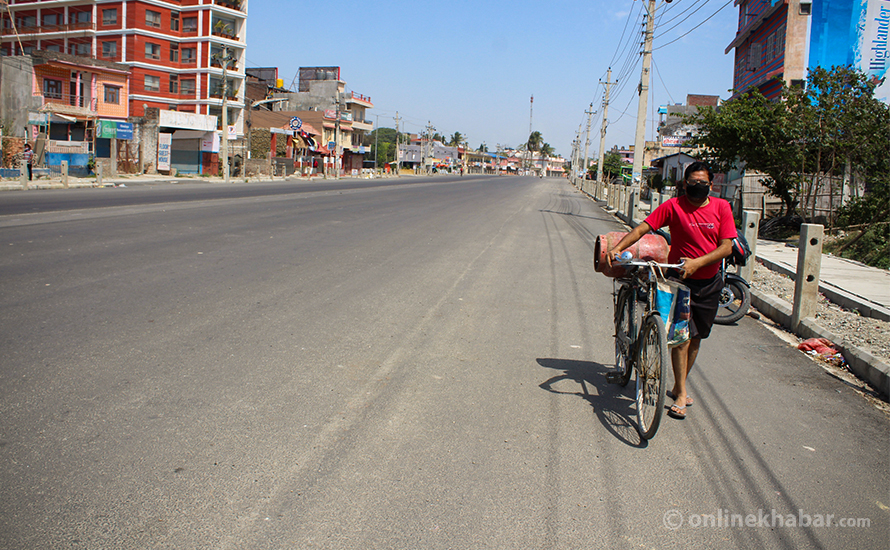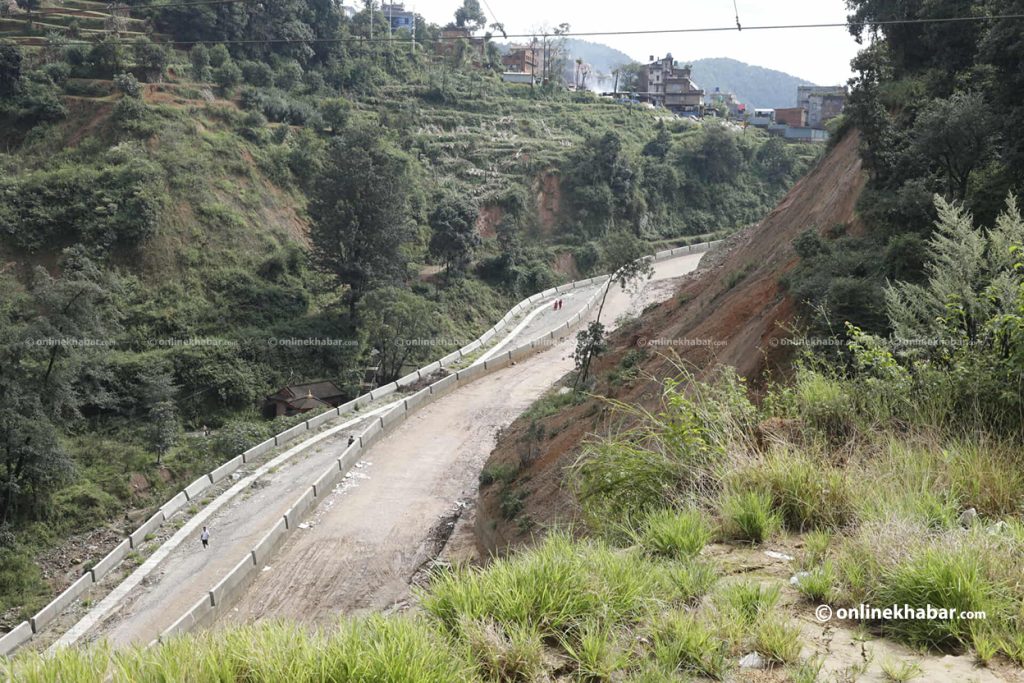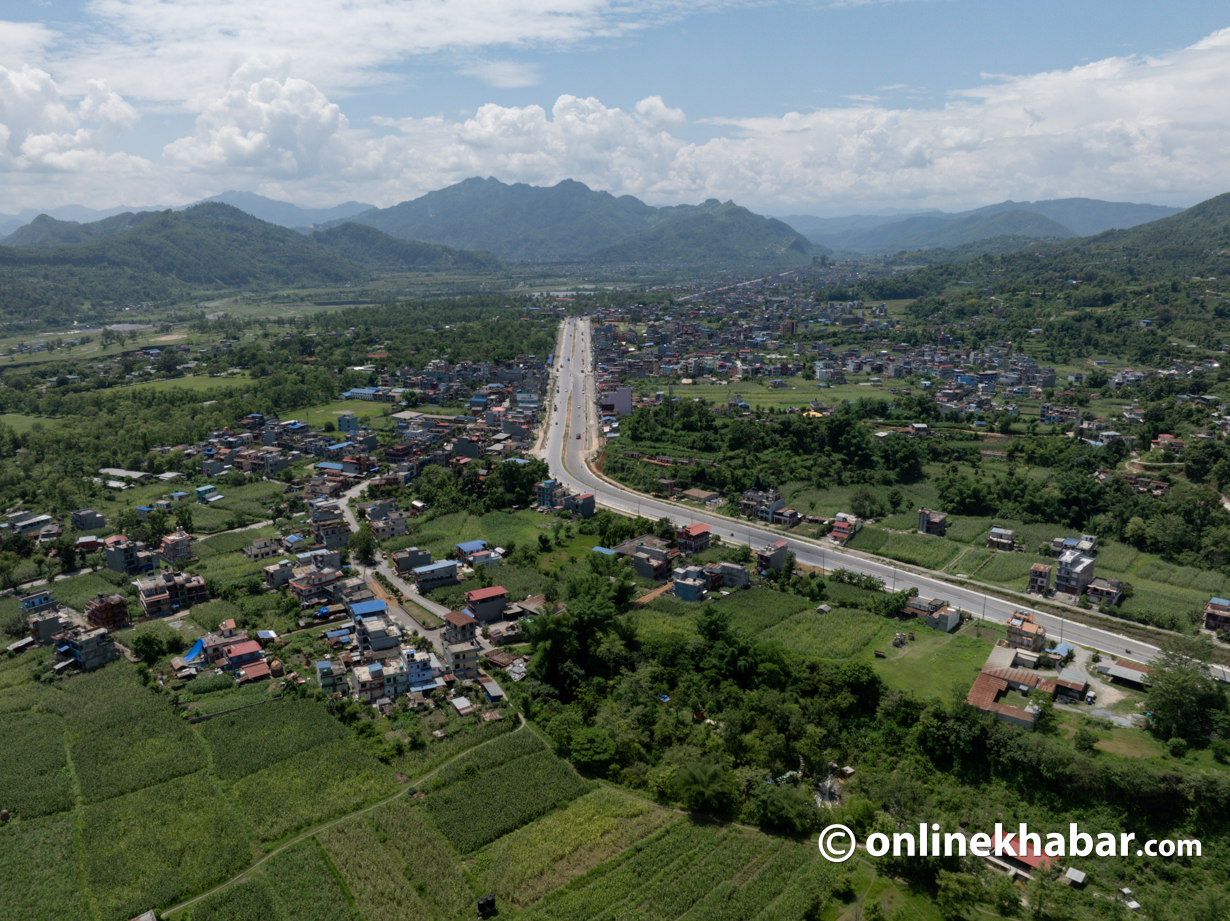
Biratnagar, a pivotal industrial hub and the capital of Koshi Province stands at the forefront of Eastern Nepal’s economic activity. However, recent developments surrounding the city’s infrastructure projects have raised concerns among its residents and authorities alike.
The spotlight falls on the ongoing six-lane project, which spans from Rani to Dharan, representing a significant investment in the region’s transportation infrastructure. Initiated during the fiscal year 2011/12 and subsequently implemented in 2012/13, the project is now in its final phase of completion. While the pavement work on the Biratnagar section is complete, several crucial aspects such as road signs and dividers remain unfinished.
Despite the completion of the paving, residents of Biratnagar have no smiles on their faces. Instead, they are confronted with escalating road safety issues stemming from the newly laid road surface’s rapid deterioration. The emergence of undulations and ruts along the road section has severely hampered smooth vehicular movement, raising alarms about the potential for future road accidents.
Causes of road deterioration and findings
The current state of the roads in Biratnagar presents a troubling conundrum, suggesting either a lapse in the quality of construction or an inundation of overloaded vehicles. Recent articles have underscored the overwhelming impact of industrial vehicles laden beyond capacity as the primary driver of road deterioration.
However, it is not just overloading that is exacerbating the issue; temperature fluctuations also play a pivotal role. As asphalt layers experience a decline in stiffness moduli with rising temperatures, the effects of overloading become more pronounced. This culminates in heightened strains, stresses, fatigue, and secondary rutting. The escalating road deterioration has sparked a flurry of inquiries directed at both contractors and public entities, prompting scrutiny of construction quality, specifications, pavement procedures, and the enforcement of stringent axle load regulations.
According to the findings of the Vehicle Overloading Guideline report submitted by Katahira and Engineers, there is a prevalent concern among transport entrepreneurs regarding the severity of overloading, particularly evident in freight vehicles originating from India, which constitutes cross-border traffic.
Transport operators have consistently voiced grievances regarding the heightened incidence of overloading, suggesting a disproportionate burden imposed by vehicles entering from neighbouring territories.
Additionally, insights gleaned from direct interviews with staff members of the Rani (Biratnagar) Bhansar agent shed further light on the magnitude of overloading practices. The staff members disclosed that vehicles often carry loads ranging from 20 to 30 tonnes, although they refrained from providing specifics regarding the vehicle type and its loading configuration based on axles.
This lack of transparency underscores the challenges in accurately assessing and addressing overloading practices, necessitating concerted efforts from regulatory authorities and stakeholders to enforce stringent measures and ensure compliance with axle load regulations.
The complexity of traffic dynamics on road pavements necessitates a nuanced approach to pavement design. Engineers employ truck factors as a vital tool to assess the impact of various vehicle types on pavement integrity, standardising damage relative to a conventional axle.
By utilising load equivalent factors, engineers can quantify the strain exerted by different axle loads, considering both legal and overloaded configurations. This meticulous process accounts for vehicles operating beyond legal limits, contributing to the damage inflicted on pavements. The prevalence of overloaded vehicles, characterised by their total weight, exacerbates pavement wear, consequently inflating construction and rehabilitation costs.
Axle load emerges as a key determinant of pavement longevity, with even marginal increases in load—such as 2 tonnes added to a 10-tonne axle—doubling its aggressiveness and halving the pavement’s service life.
These findings underscore the imperative of effective axle load management in preserving pavement durability and curbing the escalating costs of infrastructure maintenance.
Regulation to ensure structural integrity of road infrastructure
According to the design factor guidelines established by the Department of Roads (DOR), specific permissible axle loads have been delineated for different vehicle configurations. For single-axle vehicles, the permissible load stands at 10.2 tonnes, while tandem axle vehicles are permitted up to 19 tonnes, and tridem axle vehicles up to 24 tonnes.
These axle load specifications are further elaborated upon in the axle load control guidelines sanctioned by the Ministry of Physical Infrastructure and Transport (MoPIT), taking into account various axle and wheel configurations.
The regulatory oversight of axle loads falls under the purview of the Department of Transport Management (DoTM), which has codified specific weight limits for different vehicle types based on axle and tire arrangements.
For instance, a two-axle vehicle, equipped with two tires on the front axle and four tires on the rear axle, is permitted a maximum load of 16.2 tonnes. Similarly, a three-axle vehicle, comprising two tires on the front axle and eight tires on the rear tandem axle, has a capacity of 25 tonnes.
Meanwhile, a four-axle vehicle, featuring two tires on the front axle, two tires on the lift axle, and eight tires on the rear tandem axle, can carry a load of up to 31 tonnes. These regulations serve as vital benchmarks in ensuring the structural integrity of road infrastructure and fostering safe transportation practices across Nepal’s road networks.
The prevalence of overloading as the primary catalyst for road deterioration underscores the imperative for comprehensive research into the requirements of industrial vehicles and other users. The absence of such research is glaringly evident in the recent road scenario, reflecting a shortage of efforts towards establishing a robust system for traffic modelling and scientific assessment of future traffic loading.
Without a sustainable approach to construction and stringent enforcement of axle load regulations, authorities are confronted with the prospect of recurrent road reconstruction endeavours. The cumulative impact of axle loads, particularly from overloaded vehicles, throughout the pavement’s service life, inevitably compromises its longevity and serviceability.
Consequently, the erosion of pavement service life and the escalation of pavement costs are poised to exert a profound toll on the broader transport sector economy, constituting a substantial portion of the Gross National Product. Urgent remedial action is imperative to avert the looming repercussions and steer the transportation infrastructure towards a more sustainable trajectory in Biratnagar.























